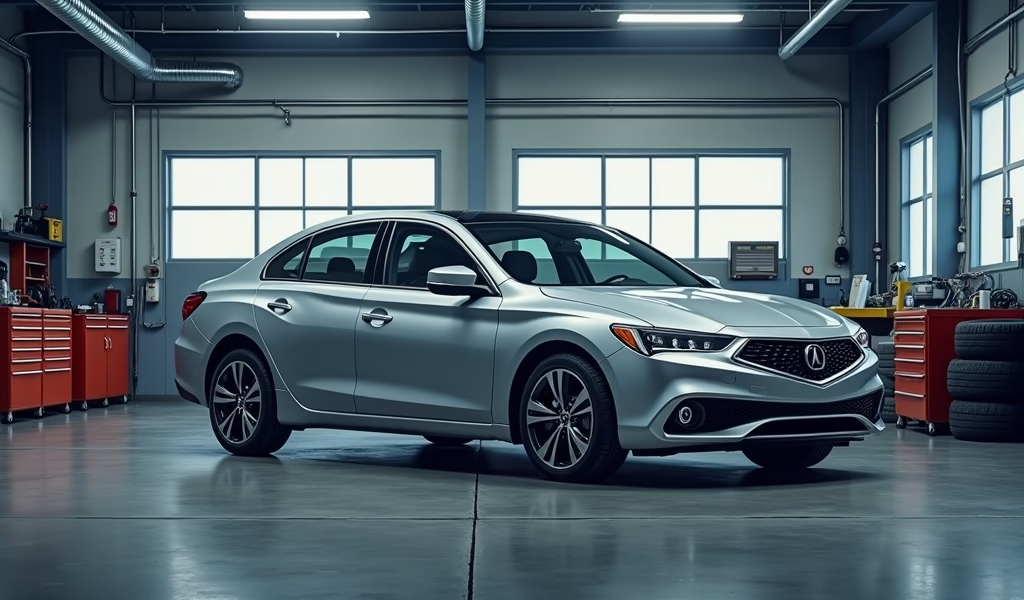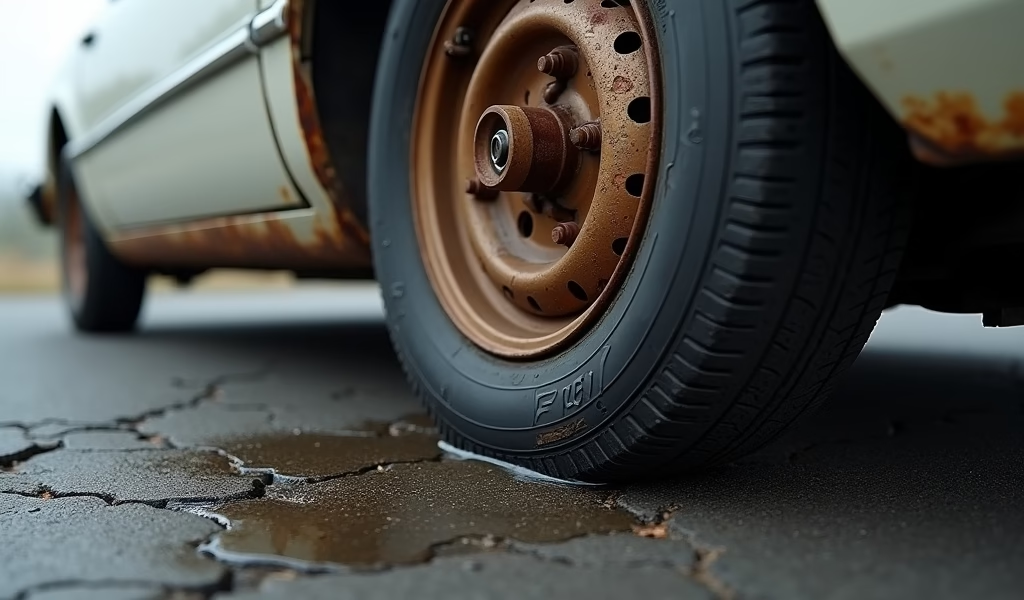Overview
This used car buying guide provides a step-by-step approach covering research, inspection, test driving, history verification, professional assessment, negotiation, paperwork handling, and post-purchase maintenance. The article emphasizes that patience, thorough research, and professional inspection are key to finding a reliable used vehicle that offers good value without the steep depreciation of new cars.
Table of Contents
- Introduction to Used Car Buying
- The Research Phase: Know Before You Go
- Visual Inspection: What to Look For
- The Test Drive: Feel the Difference
- Vehicle History: Uncovering the Past
- Professional Mechanical Inspection
- Negotiating the Right Price
- Handling the Paperwork
- After the Purchase: First Steps
- Conclusion
- Frequently Asked Questions
Introduction to Used Car Buying
Stepping into the world of used cars can feel like navigating a mechanical maze without a map. As a mechanic who’s seen everything from pristine classics to lemons dressed in fresh paint, I’m here to guide you through this used cars buying guide with insights that could save you thousands. The used car market offers incredible value when you know what to look for—and what to avoid.
After 20 years under the hood, I’ve watched countless folks drive away happy in pre-owned vehicles that served them faithfully for years. Others weren’t so lucky. The difference? Knowledge and patience. That’s what we’re building today.
Whether you’re shopping at dealerships or browsing private car listings, these principles apply universally. Let’s roll up our sleeves and get into what really matters when selecting your next vehicle.
The Research Phase: Know Before You Go
Before you set foot on any lot or driveway, arm yourself with research. This groundwork makes all the difference between finding a gem and getting stuck with a money pit.
Start by identifying your actual needs—not just your wants. A seven-passenger SUV might seem appealing, but do you truly need that space and fuel consumption? Be honest about your daily driving habits, typical cargo, and passenger requirements.
Next, establish a realistic budget. Remember, the purchase price is just the beginning. According to AAA’s research, the average annual cost of vehicle ownership exceeds $9,000 when factoring in maintenance, insurance, fuel, and depreciation.
Research specific models that meet your criteria, paying special attention to:
- Common problems for each model year
- Average maintenance costs
- Typical lifespan of major components
- Safety ratings and recall history
- Fuel economy in real-world conditions
- Insurance costs (get quotes before buying)
Take time to understand market values using tools like Kelley Blue Book, Edmunds, or NADA guides. This knowledge becomes your leverage later in negotiations. Don’t rush this phase—it’s the foundation of a successful purchase.
If you’re concerned about financing, investigate how to get approved for a car loan with favorable terms before falling in love with any specific vehicle. Having pre-approval gives you powerful negotiating position and clarity on your true budget.

Visual Inspection: What to Look For
When you’ve found a promising candidate, it’s time to become a detective. I always tell my customers to see vehicles in daylight—preferably on a clear day. Artificial lighting and rain can hide numerous issues that would be obvious in good conditions.
Start with the exterior. Walk slowly around the entire vehicle, maintaining a consistent distance to observe panel gaps and alignment. Uneven spaces between body panels often indicate previous collision damage or poor repair work.
Look for these exterior warning signs:
- Different paint shades between panels (suggests replacement or repaint)
- Paint overspray on trim, rubber seals, or under the hood (indicates body repair)
- Bubbling or blistering paint (potential rust developing underneath)
- Fresh undercoating (might hide structural rust or damage)
- Mismatched tires or uneven tire wear (alignment issues or neglected rotation)
Move to the interior with the same methodical approach. Don’t just glance—inspect thoroughly:
- Check seat wear against the claimed mileage (excessive wear may indicate odometer fraud)
- Smell for musty odors that might indicate water damage or leaks
- Look under floor mats and seat cushions for rust, water stains, or dirt accumulation
- Test every single button, switch, and control for proper function
- Examine headliner and trim for signs of water intrusion or shoddy repairs
The engine compartment tells the real story. Even if you’re not mechanically inclined, look for these telltale signs:
- Fresh oil or fluids on engine components (potential active leaks)
- White residue around hose connections or the radiator cap (cooling system issues)
- Corroded battery terminals or wiring (electrical system neglect)
- Mismatched components or aftermarket additions (possible DIY repairs)
Don’t be embarrassed to get on your hands and knees to look underneath. A clean undercarriage is rare in older vehicles, but excessive rust, hanging components, or fresh undercoating should raise concerns.
The Test Drive: Feel the Difference
The test drive reveals what static inspection cannot. Plan for at least 30 minutes behind the wheel, covering various driving conditions if possible. As a mechanic, I can tell you that many issues only manifest at certain speeds or temperatures.
Before starting the engine, turn the key to the “on” position and verify all warning lights illuminate briefly—this confirms they haven’t been disconnected to hide issues. When you start the cold engine, listen carefully for unusual sounds.
Once driving, evaluate these key areas:
- Acceleration: Should be smooth without hesitation or surging
- Braking: No pulling, pulsating, or excessive pedal travel
- Steering: Responsive without excessive play or unusual noises
- Transmission: Shifts smoothly without clunking or slipping
- Suspension: Absorbs bumps without excessive bouncing or bottoming out
Try to include a stretch of highway driving to assess high-speed stability and engine noise. While at cruising speed, briefly take your hands off the wheel (maintain control with light fingertip contact) to check if the vehicle maintains a straight line or pulls to one side.
Find an empty parking lot to test tight turns in both directions, listening for clicking or grinding sounds that may indicate worn CV joints or wheel bearings. Perform an emergency braking test if safe to do so, noting any pulling or vibration.
After driving, park and check under the vehicle for any fresh fluid leaks that might have appeared during your drive. Also feel the wheel rims—excessive heat in one wheel could indicate a dragging brake caliper.
Vehicle History: Uncovering the Past
A vehicle’s history can reveal red flags no visual inspection will uncover. Always obtain the Vehicle Identification Number (VIN) and run it through a comprehensive history report service like Carfax or AutoCheck. While these reports cost money, consider it insurance against buying someone else’s nightmare.
History reports typically reveal:
- Reported accidents and their severity
- Title status (clean, salvage, rebuilt, etc.)
- Odometer readings at service intervals (to verify against current reading)
- Previous uses (personal, rental, fleet, etc.)
- Service records (if performed at reporting facilities)
- Recall information and completion status
Pay special attention to title history. Vehicles that have moved frequently between states may be hiding title issues through a process called “title washing.” Similarly, watch for significant gaps in the service history, which might indicate periods of neglect.
Beyond commercial reports, request maintenance records from the seller. Consistent service from the same facility often indicates a conscientious owner. I’ve seen countless vehicles where proper maintenance made them outlast others of the same model by years.
Ask the seller direct questions about the vehicle’s history and watch for inconsistencies in their story. Honest sellers will disclose issues upfront rather than have you discover them later. Remember, understanding what’s a good APR for a car loan becomes irrelevant if you’re financing a vehicle with hidden problems.

Professional Mechanical Inspection
Even with a thorough personal inspection, nothing replaces a professional assessment. As someone who’s performed thousands of pre-purchase inspections, I’ve saved buyers from disasters they never would have spotted themselves.
For $100-200, a comprehensive inspection from an independent mechanic provides peace of mind worth many times that amount. If a seller refuses to allow an inspection, walk away immediately—they’re likely hiding something significant.
A professional inspection typically includes:
- Compression or leak-down testing (to verify internal engine condition)
- Computer diagnostic scanning (revealing stored trouble codes even if the check engine light isn’t on)
- Undercarriage inspection on a lift (revealing hidden damage or corrosion)
- Cooling system pressure testing (identifying potential leaks before they occur)
- Brake and suspension component measurement (showing remaining service life)
According to the Consumer Reports reliability studies, having a pre-purchase inspection can save buyers an average of $2,000 in unexpected repairs during their first year of ownership.
Ask the mechanic to prioritize their findings by urgency and cost. Some issues might be minor and negotiable, while others could be deal-breakers. Use this information to make an informed decision or negotiate a fair price reduction to cover necessary repairs.
Negotiating the Right Price
Armed with research, inspection results, and market knowledge, you’re ready to negotiate effectively. The cardinal rule: never appear emotionally attached to any vehicle, even if you’ve fallen in love with it. Emotional buyers always overpay.
Start by establishing the true market value based on condition, mileage, features, and local market trends. Then adjust downward for any issues discovered during your inspections. Be specific about how much each problem devalues the vehicle based on repair estimates.
Effective negotiation strategies include:
- Starting with a reasonable offer (lowballing leads to breakdown in negotiations)
- Justifying your offer with specific facts about the vehicle’s condition
- Being prepared to walk away (your strongest negotiating tool)
- Focusing on the out-the-door price, not monthly payments
- Addressing issues separately from price (repairs vs. price reduction)
When dealing with dealerships, understand that the salesperson isn’t your adversary—the sales manager controlling the numbers is your real negotiating counterpart. Be patient and persistent, as most dealerships expect multiple counteroffers before reaching agreement.
With private sellers, a fair approach often yields the best results. Most private parties simply want a reasonable price without hassle. Bringing cash (safely) can often secure a better deal, as it eliminates concerns about payment problems.
Handling the Paperwork
Once you’ve agreed on a price, proper documentation protects both parties. Never hand over money without receiving all required paperwork, completed correctly.
Essential documents include:
- Title (properly signed and notarized if required in your state)
- Bill of sale (detailing the transaction terms and vehicle condition)
- Release of liability (protecting you from issues arising after the sale)
- Warranty documents (if applicable)
- Maintenance records (request everything available)
If purchasing from a dealer, you’ll encounter additional documents like financing agreements, optional warranty offers, and various disclosures. Review everything carefully before signing, and don’t hesitate to ask questions about unfamiliar terms or fees.
Be wary of last-minute additions to the agreed price. Common dealer add-ons like extended warranties, paint protection, or gap insurance are often heavily marked up. If you want these products, negotiate their prices separately or consider third-party options.
Verify that the VIN on all documents matches the vehicle’s VIN plate. This simple check prevents paperwork errors that can become registration nightmares later. Additionally, confirm that the seller has clear ownership authority—if multiple names appear on the title, all parties must sign off on the transaction.
After the Purchase: First Steps
Congratulations on your “new” used car! Now let’s ensure it serves you well for years to come. Your first weeks of ownership should include several important steps.
Start with these immediate tasks:
- Transfer the title and register the vehicle promptly (avoiding potential penalties)
- Update your insurance coverage before driving away
- Change keys or reprogram keyless entry if security is a concern
- Create a folder for all documents and receipts going forward
Even if the previous owner maintained the vehicle properly, I recommend a fresh service baseline:
- Change all fluids (oil, transmission, brake fluid, coolant, power steering)
- Replace filters (air, fuel, cabin air)
- Inspect and possibly replace timing belt if due (a catastrophic failure point)
- Check and adjust tire pressures to manufacturer specifications
- Set up a maintenance schedule based on the vehicle’s condition and history
This “reset” gives you confidence in the vehicle’s current condition and establishes a clear starting point for your maintenance records. Many of my long-term customers attribute their vehicles’ longevity to this practice.
Finally, address any issues identified during pre-purchase inspection according to priority. Some repairs might be more cost-effective when bundled together, while others require immediate attention for safety or reliability.
Conclusion
Buying a used car doesn’t have to be intimidating when you approach it methodically. The extra time invested in research, inspection, and verification pays dividends throughout your ownership experience. A well-chosen pre-owned vehicle can provide years of reliable service without the steep depreciation of new cars.
Remember that patience is your greatest ally in this process. The right vehicle at the right price will come along if you’re willing to wait for it. Rushing leads to compromise, and compromises often become regrets.
This used cars buying guide contains decades of mechanical expertise condensed into actionable advice. By following these steps—researching thoroughly, inspecting carefully, verifying history, securing professional assessment, negotiating fairly, handling paperwork properly, and establishing a solid maintenance baseline—you’re setting yourself up for a positive ownership experience.
Drive safely, maintain consistently, and enjoy the satisfaction of a smart purchase decision.
Frequently Asked Questions
What’s the ideal mileage when buying a used car?
There’s no magic number, but modern vehicles can reliably reach 200,000+ miles with proper care. Focus more on maintenance history and condition than odometer reading.
Is buying from a private seller riskier than from a dealership?
Private sales offer better pricing but fewer protections. Dealers typically perform basic reconditioning and may offer limited warranties, but charge premium prices for this security.
How can I check if a used car has been in an accident?
Vehicle history reports will show reported accidents, but also look for mismatched paint, uneven panel gaps, and weld marks in doorjambs or trunk areas. Professional inspections can reveal hidden damage.
Should I avoid cars with salvage or rebuilt titles?
Generally yes, unless you’re very knowledgeable about cars or getting an exceptional deal. Salvage vehicles often have hidden problems and typically resell for 30-40% less than clean-title equivalents.
What’s more important: low miles or recent model year?
Recent models typically have better safety features and technology, while lower-mileage vehicles often have less wear. Balance both factors against your priority needs and budget constraints.

